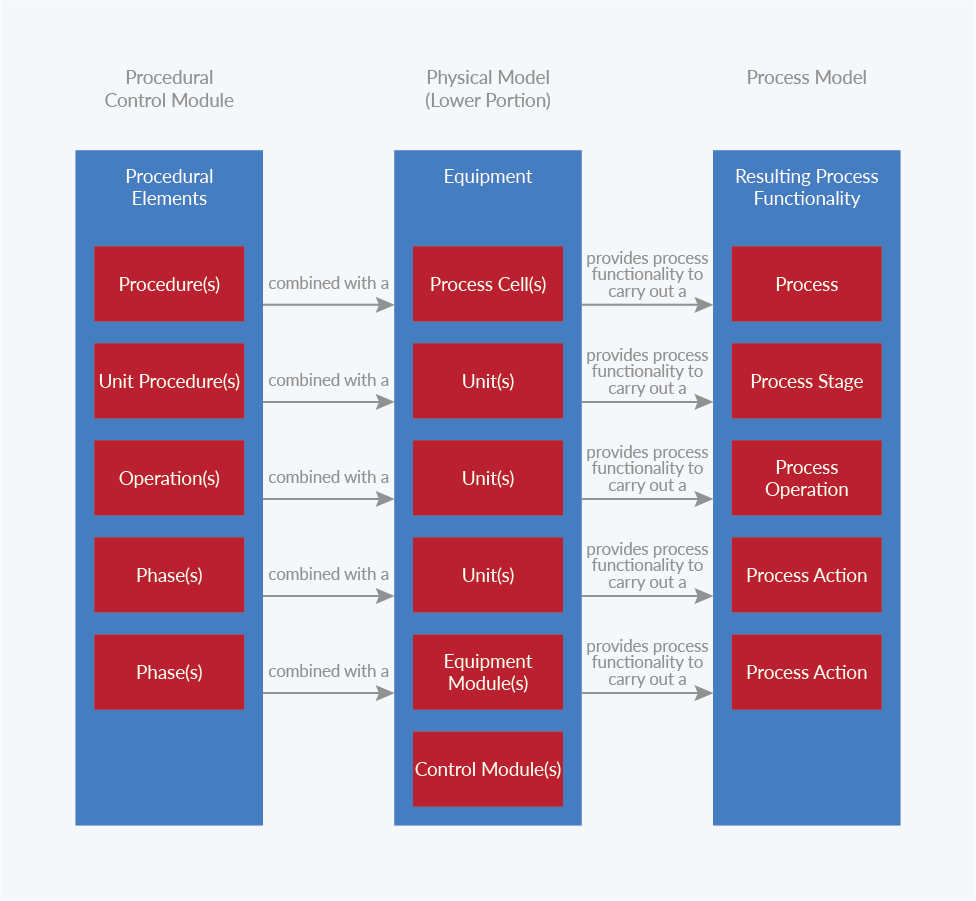As a manufacturer using a batch production process, developing a method to produce your “Golden Batch,” or the ideal batch against which all other batches are compared, is likely your goal. But producing the “Golden Batch” is not an easy task since batch production relies on the availability of the right materials and equipment at the exact right time in a process to effectively execute a recipe. While a batch management solution is the general answer, batch applications come in a variety of scope and complexity, which makes selecting and configuring the right batch solution a difficult task.
To help simplify the complexities of configuring a batch solution, in the 1990s, the International Society of Automation (ISA) developed the ISA-88 standard. The goal of this standard was to create a modular approach to evaluating complex processes and breaking them down into more simplistic pieces and functions that can be combined to provide the required functionality. These building blocks for configuring a batch management solution are defined in three models in the first part of this standard, ISA-88.01, which is shown in Figure 1.

Figure 1. The three models defined by ISA-88.01 and how the models are related.
These models can be applied to any size process and with batch applications that range from fixed sequences with variable parameters to complex multi-unit/multi-recipe processing. Additionally, since these models use a building block approach, ISA-88.01 is helpful and appropriate when you need add more capacity and scale up your process.
Selecting the Right Batch Solution for Your Process Needs
While it is good to know you want to use the models defined in ISA-88.01 to develop your batch management solution, you also need to determine which batch management solution is the best fit for your application needs. Three commonly used batch management solutions include the following:
- Basic ordered sequence – The most simplistic batch solution that involves known phases happening in a certain, repeatable order
- In-controller sequence manager – Involves a single or dedicated process line that requires some level of variability in the operation or includes a few decisions that need to be made during the process
- Flexible batch manager – A sophisticated solution that includes the ability to dynamically select from multiple possible pathways to make a batch
At ACE, we have the experience necessary to help you identify the most appropriate batch control solution for your operation based on the size and complexity of your process. We can save you time and money, by reviewing your requirements and designing a solution that fits current production needs but is also scalable as needs change. Since we follow the models defined by ISA-88.01 in our batch management solutions, we can start with a basic ordered sequence or an in-controller sequence manager that can be leveraged in the future to develop a full flexible batch management system as production scales.
Download our latest white paper, Your Guide to Selecting the Right Batch Management System Based on SA88.01 Models, to learn more about ISA-88.01 and how we can work together to develop an ideal batch management solution for your production needs.

